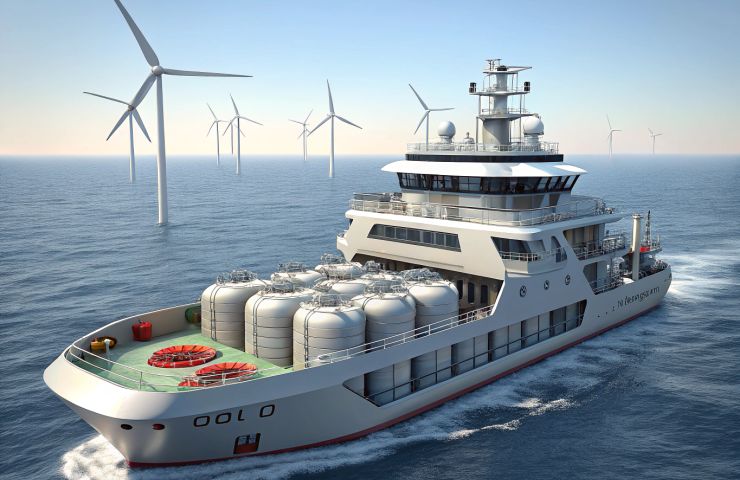
Liquid Hydrogen Storage Set for the High Seas as NavHyS Targets Maritime Decarbonization
May 1, 2025NavHyS Project Sets Sail with Liquid Hydrogen for Offshore Wind Ships
A bold new European project, NavHyS, is getting ready to make waves in the world of offshore energy. Backed by the EU and launching in January 2025, this 36-month initiative is all about proving that liquid hydrogen (LH₂) storage aboard Service Operation Vessels (SOVs) isn’t just feasible—it’s the future.
Bringing together heavy-hitters like Bureau Veritas, ArianeGroup, ENGIE, and other major players, the project taps into cutting-edge aerospace cryogenics and deep maritime expertise to crack one of clean shipping’s toughest challenges: how to safely and efficiently power vessels way out at sea.
Storing Liquid Hydrogen on the High Seas
So, what’s NavHyS actually doing? The team is aiming to install below-deck Type C cryogenic tanks on SOVs. These high-tech tanks will be able to store a whopping 18 tonnes of LH₂ per vessel. The system is being designed to refuel smoothly and safely, with performance to match the intense demands of offshore wind maintenance.
The project has its sights set on hitting Technology Readiness Level (TRL) 8-9 by 2030, which puts it right on track for full-scale commercial rollout starting in 2035. That’s not some distant concept—it’s a timeline that puts liquid hydrogen at the heart of day-to-day maritime operations within the next decade.
Paving the Way for Maritime Decarbonization
Why does this matter so much? For starters, LH₂ has a seriously high energy density. That means these vessels can stay out at sea longer without having to come back to port to refuel. Add to that zero-emissions potential, and you’ve got a game-changer for maritime decarbonization.
It’s all part of a bigger picture. Europe is pushing hard to take the global lead in the hydrogen economy, and NavHyS could become one of the flagship projects turning that vision into reality. It’s not just about one ship or one route—it’s about setting the standard for how hydrogen storage is done, safely and sustainably, across the shipping industry.
Testing in the Real World
France, Sweden, and Finland have been chosen as real-world proving grounds for the project, offering different conditions to refine the tech and processes across a broad spectrum of challenges. The idea is to fine-tune everything from refueling logistics to onboard performance as the project moves closer to launch.
Hydrogen Infrastructure for the Long Haul
As hydrogen slowly but surely builds out its global infrastructure, pilot projects like NavHyS are critical. They help iron out the kinks, build trust, and, perhaps most importantly, draw up the blueprints that everyone else can follow. If all goes well, NavHyS won’t just help kick-start clean energy at sea—it could play a big role in writing the rulebook for hydrogen-powered ships worldwide.
In short, this isn’t just about tech—it’s about turning ambition into action. And with big names and bold goals backing it up, NavHyS is definitely a project to keep your eyes on.



 With over 15 years of reporting hydrogen news, we are your premier source for the latest updates and insights in hydrogen and renewable energy.
With over 15 years of reporting hydrogen news, we are your premier source for the latest updates and insights in hydrogen and renewable energy.